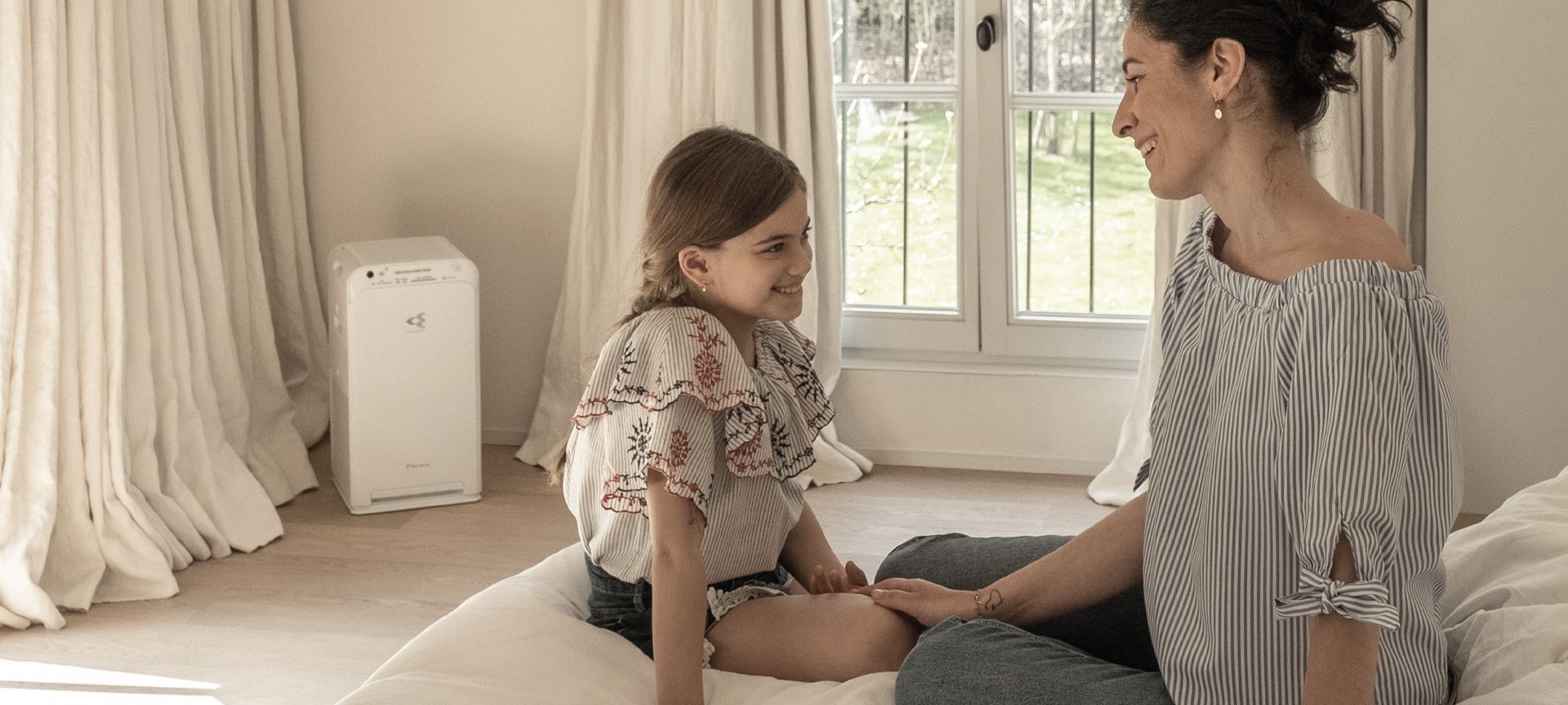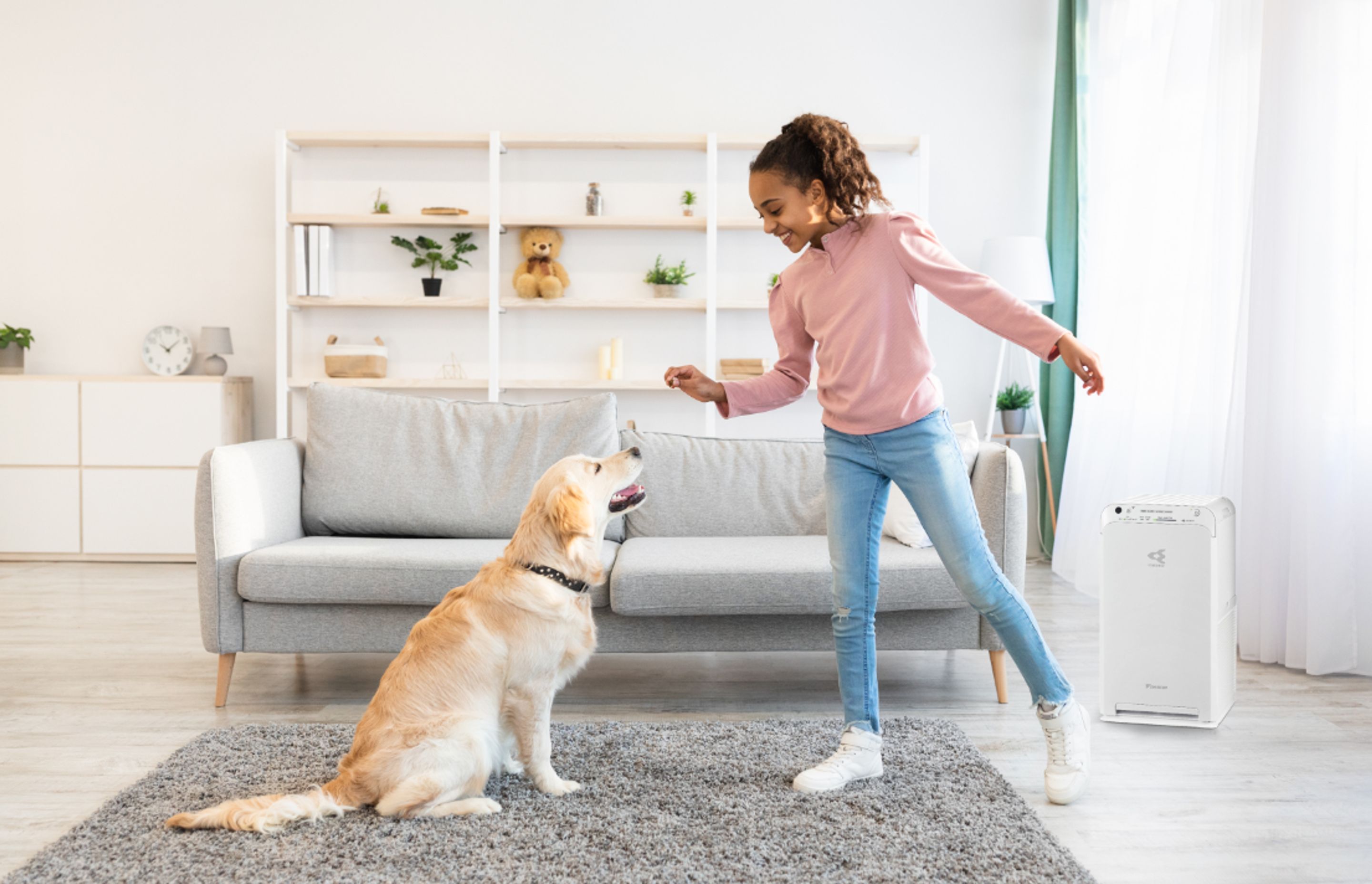A breath of fresh air: How to make your indoor space healthier
Written by
05 September 2022
•
3 min read

On average, adults inhale 11,000 litres of air every day and 85–90% of this comes from an indoor environment. However, indoor air quality is often neglected in homes and workspaces across Aotearoa.
There is a rising awareness of this, though, and there are readily-available technologies to help: heat recovery ventilation systems and air purifiers.
Heat recovery ventilation in the home and office
The most popular ventilation systems in New Zealand are positive pressure or roof cavity ventilation systems, however, research shows the heat available from moving roof space air into the home can make a space colder or hotter than desired.
Daikin’s senior lead engineer, Ivon Kumar, explains that heat exchange systems are an alternative: “Heat recovery ventilation is tempering outdoor air that comes into the space based on the indoor air.”
“The intention is to bring in fresh air,” says Gary Felstead, deputy general manager at Daikin. “You’ve got a higher set point to work from before your heater or air conditioning has to help. It certainly saves energy, and it also gives you that fresh air – whereas positive pressure systems are just blasting in air from directly outside.”
In modern office buildings that are airtight and subject to higher temperatures as a result of lighting, computers and other technology, heat recovery systems are also beneficial.
“You want to know that when you’re going into the office that the work environment is also conditioned, that it’s got the same indoor air quality that you expect at home,” says Gary. “A lot of our products go across both areas of home and office.”
An air purifier is mobile, it can be moved from room to room, so it's the best solution for a simple budget.
The power of air purifiers
An economical solution to indoor air pollution, is of course, air purifiers.
“An air purifier is mobile, it can be moved from room to room, so it's the best solution for a simple budget,” says Ivon.
But the technology delivers anything but simple results. Daikin’s air purifiers with Streamer technology are designed to capture, suppress and break down pollutants including bacteria, formaldehyde and odours. The products have also been found to remove more than 99.6% of pollen in two hours, and more than 99.61% of allergens and more than 99.9% of mould in 24 hours.
The range is also certified by Sensitive Choice New Zealand – a recognition of being asthma- and allergy-friendly.

Measuring the results
Air quality is also no longer a guessing game – Daikin control hubs allow you to measure the levels.
“We have a new control hub called Reiri that allows users to control air conditioning systems,” says Ivon.
“There is a ‘lite’ version, and another that can also do full home automation. It also has the capabilities of energy trend graphs, and has a separate indoor air quality sensor that can display the PPM level of CO2, total volatile organic compounds (TVOCs), humidity and temperature. It gives homeowners information on what is actually going on inside their house.”
Being able to measure everything gives the homeowner confidence as to what is installed is helping – especially humidity and CO2 levels.
Gary adds that this is key because unlike heating and air conditioning where the change in temperature can be physically experienced, this is not the case with filtration products.
“It’s intangible. So, being able to measure everything gives the homeowner confidence as to what is installed is helping – especially humidity and CO2 levels.”
Explore home and office air purification technology from Daikin on ArchiPro.